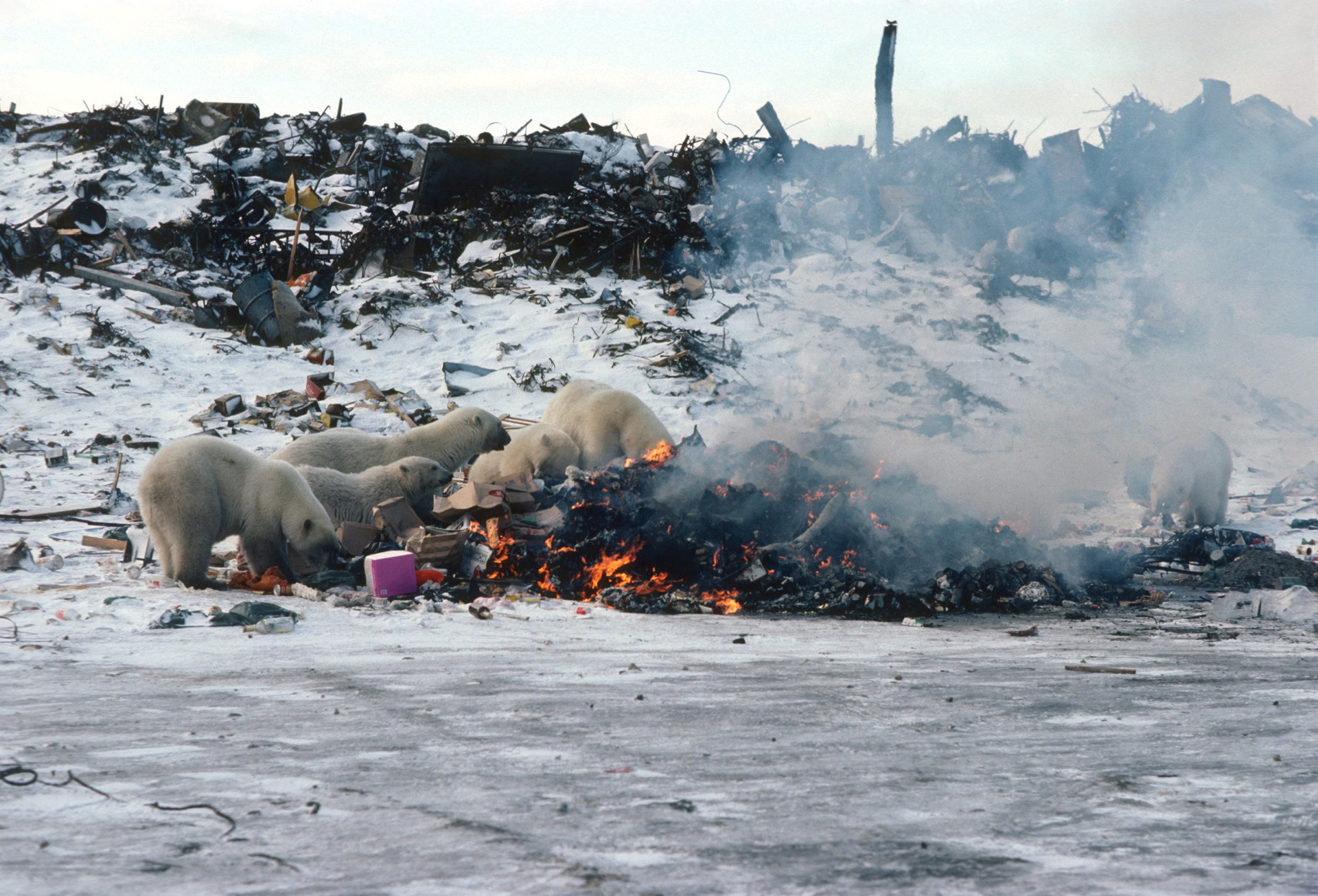Polar bears scavenge on garbage to cope with climate change
That can expose the bears to risks of health issues — and increase the odds of fatal encounters with humans.

LONDON — Hungry polar bears are turning to garbage dumps to fill their stomachs as their icy habitat disappears.
On Wednesday, a team of Canadian and U.S. scientists warned that trash poses an emerging threat to already-vulnerable polar bear populations as the animals become more reliant on landfills near northern communities. This is leading to deadly conflicts with people, the report published in the journal Oryx said.
“Bears and garbage are a bad association,” said co-author Andrew Derocher, a biologist at the University of Alberta. “We know that very well from a brown bear and black bear perspective, and now it’s an issue developing with polar bears.”
Polar bears rely on sea ice to hunt seals. But with the Arctic warming four times faster than the rest of the world, sea ice is melting out earlier in the summer and freezing up later in the fall. This forces bears to spend more time ashore, away from their natural prey.
To fatten up, the report said polar bears are now gathering en masse around open dumps in places in the Arctic and sub-Arctic such as Russia’s Belushya Guba, and whale bone piles left over from Inuit hunts near Kaktovik, Alaska.
Such behavior is risky. Local wildlife managers may kill bears out of concern for public safety. And consuming garbage can make bears sick.
Wrappers are often frozen into food scraps so polar bears end up eating plastic and other non-edible materials. This can cause fatal blockages.
“Bears don’t know all the negatives that come with plastic ingestion and the diseases and toxins they’re likely exposed to in a (landfill) setting,” said co-author Geoff York, senior director of conservation at Polar Bears International, an advocacy group.
The situation, scientists said, is likely to get worse. Human populations are increasing in the Arctic. Nunavut, Canada — where thousands of polar bears live — is projected to grow nearly 40 percent by 2043.
Improving waste management remains a challenge for remote communities. The ground is often frozen, making it hard to bury garbage. And trucking it out is expensive. Federal funding will be required to fix the problem, scientists said.
“Already we’ve had a couple human fatalities in the eastern Canadian Arctic,” said Derocher. “It’s surprising just how many places that never had polar bear problems are now having emerging issues.”



